The Passing of Two Lebanese Pioneers: Michel de Bustros and Serge Hochar
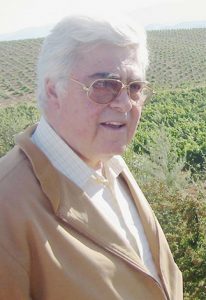
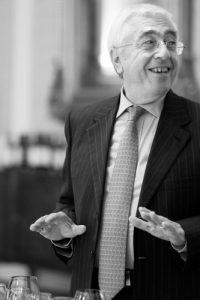
Earlier this week, I was saddened to learn of the passing of Michel de Bustros, the founder of Lebanon’s Château Kefraya. With the loss of Château Musar’s Serge Hochar at the end of 2014, Mr. de Bustros is the second iconic person Lebanon’s wine industry has lost in as many years. They were very different personalities. Serge was charismatic and cultivated a heroic, larger-than-life image of himself that was embraced almost anywhere he journeyed with his wine. Bustros was more formal, a quieter, more contemplative type (ergo, it seems more appropriate to use his surname). He loved opera and the arts, was involved in environmental causes, and while he offered a wonderful reception to visitors at Château Kefraya, he didn’t, to my knowledge, travel nearly as much as Serge, especially to the Anglo-Saxon markets in which Musar has enjoyed so much commercial success.
Yet, in their own way, each man was fundamental to the development of Lebanon’s modern wine industry. The uniqueness of Château Musar wines – plus the stories Serge spun about them – brought outside attention to Lebanese wines as never before. It is true that few wine drinkers – even wine professionals – knew something called “Lebanese wine” existed before hearing about Musar, and many to this day don’t even know the country has any wineries beyond Musar. Still, Serge opened the door, and the Lebanese wine industry is justifiably grateful.
All of Serge’s skills as a promoter would have come to naught if not for the distinct character of his wines. As a winemaker, Serge was unique, eschewing winemaking fashions in favor of his unique expression of what wine could be if allowed to do its own thing (that is, without allowing it to become vinegar). His ‘Château” wines (as opposed to two other lines of wines Musar makes ) were earthy and ethereal at
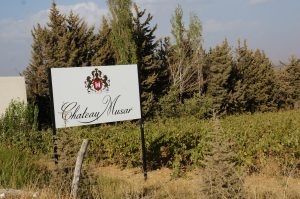
once, expressing some measure of fruit, but also earth, and sometimes more than a hint of volatile acidity. They aged remarkably well – a function of their vinification and the long nurturing Musar afforded them – ten years and more – before release. These were winemaker wines, and they expressed Serge Hochar’s personality well: a mix of charm and irony, generosity and a hint of the acerbic. Serge talked about vines, but until 1990, he didn’t own any, sourcing his grapes from the Beqaa and Mount Lebanon, trucking them over the Chouf range to his winery above the coast at Ghazir.
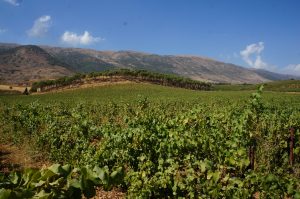
Michel de Bustros’ influence was different. He started as a grower, planting vineyards around the village of Kefraya in the south, western portion of the Beqaa Valley in 1951. While Bustros was by no means the first grower of wine grapes in the region, he was one of the few to specialize in them, as well as to pay careful attention to quality. (Unfortunately, one cannot say that about a lot of places in the wine world at that time).
For over a quarter century, the grapes were sold to the small handful of wineries that existed until the start of Lebanon’s civil war in 1975, as well as distillers of araq. Even Musar bought from him. In 1978, three years into the civil war that traumatized Lebanon until 1991, Bustros started Château Kefraya, a fool-hardy venture, perhaps, but one that survived and prospered. The wines did not have the same esoteric personality as those from Musar, but they were of high quality – remarkable considering some of the challenges Château Kefraya faced during the war. (All Lebanese, winemakers, included, suffered during those years. British and American journalists showered Serge Hochar with a hero’s praise for the ordeals he faced in his determination to make wine, no matter what. The stories of trucking grapes across battle lines and the turf of various militias are indeed impressive. But he was by no means the only Lebanese winemaker who faced challenges, and, the Musar winery, in an area that remained firmly under the control of Maronite militias, was not, to my knowledge, seriously threatened during the war (I am open to correction on this point, and I am not here making any political insinuations). Château Kefraya, on the other
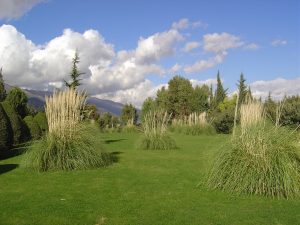
hand, had a large portion of its vineyards occupied by an Israeli tank company during its 1982 invasion of Lebanon, and Kefraya’s then winemaker, the long-haired, bearded Frenchman Yves Morard, was arrested and held by the Israelis for 10 days. After the war, Château Kefraya became a pioneer of the wine-lifestyle, opening a restaurant that served continental cuisine, and creating beautifully landscaped gardens named after composers of Bustros’ beloved operas.
Unlike Serge Hochar, Bustros, trained as a lawyer, didn’t make wine himself. Instead, he hired Frenchmen and Spaniards – the latter responsible for the Tempranillo planted in his vineyards. These winemakers, Yves Morard, Jean-Michel Fernandez (ex Château Citran) and Gabriel Rivero (ex Ch. Sociando-Mallet), each left their mark. Yves Morard took Kefraya through its early, difficult years, and subsequently worked at other local wineries before recently returning to take charge of his own, native Rhône Valley property. Jean-Michel Fernandez gained acclaim for creating Kefraya’s flagship wine, Comte de M, which earn 91 Parker points in 1997, that is, when Parker points had real significance. Gabriel Rivero continued the legacy, refining Kefraya’s wines until he got a better offer as winemaker/partner at Ixsir, which at the current time is arguably Lebanon’s most dramatic wine estate. Today, Kefraya’s winemaking and viticulture are in the hands of Fabrice Guiberteau, from Cognac.
There is far more to the lives of Michel de Bustros and Serge Hochar than I describe here. A significant biography will soon be released about the latter, though, for a more thorough look at the wine industry these two men created, one could do no better than read the engagingly told tales of Michael Karam’s book The Wines of Lebanon (Saqi Press, 2005). That said, both Serge and Michel lived brilliant lives though brilliant, if tragic times. I had the opportunity to raise a glass in Serge’s honor at a memorial event in New York last year. For Michel de Bustros, I raise another now, Verdi playing in the background, all in admiration of a life well lived.



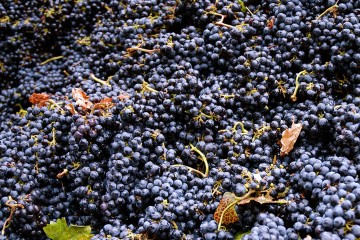
No Comment